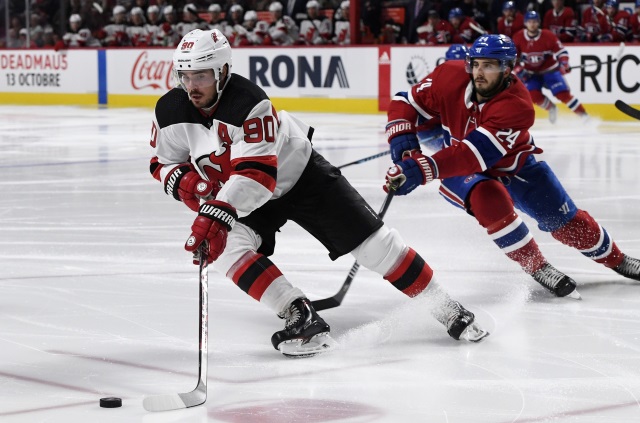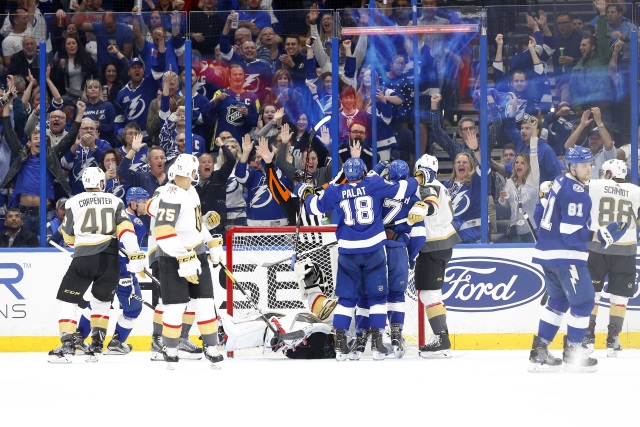The Edmonton Oilers stand two points out of a wildcard spot in the Western Conference. Fortunately, no team running away from them leaves them in a position to still make the playoffs.
Acting “GM” Keith Gretzky deals from a position of weakness this trade deadline. Some feel Edmonton must make the playoffs but their cap numbers hurt.
Edmonton sees themselves as buyers but also as sellers. Lateral moves become very possible because of what they have in possible dead weight. Lyle Richardson touched on this last month when opining about the team.
The Edmonton Oilers: What has changed?
At some point, the general manager faces the specter of the salary cap. Edmonton is just under the salary cap by $51,371. Now come the deadline, those dollars translate to approximately $4.27 million. That creates little wiggle room to make moves. The salary for salary deals or players for prospects, perhaps.
The Edmonton Oilers are further hampered since Oscar Klefbom has returned and now Andrej Sekera is close to coming back. This means they will have to rearrange their cap hits just to stay cap compliant. Buying seems to become an afterthought until this is rectified.
In the meantime, Keith Gretzky pinned in by the notion of making the playoffs or else has a lot to ponder. Can they buy, sell, or both? There are several ugly contracts on the Oilers that will not go away magically.
Who could come and go? Let’s take a peak.
Edmonton Oilers’ Pieces To Target
Andre Burakovsky — The forward comes at a reasonable price as far as cap hit ($3 million). He is on the last year of an expiring contract. Also, both Washington and Edmonton have next to no cap space. In order for a deal to happen, a contract likely has to go the other way that is almost equal. One possibility is salaried retention and the contract of Tobias Rieder. Would Washington make that deal, however? Remember, Edmonton emphasized they do not want to trade future assets.
Marcus Johansson — Johansson could provide an uptick in secondary scoring. His relative possession compared to the team is +0.6% at even strength, and this is despite a defensive deployment of nearly 53%. His cap hit is $4.583 million just this season. One good thing is the New Jersey Devils have a boatload of cap space to take on contracts if necessary. Again, salary retention could be involved here as well. What is clear is Johansson has handled increased minutes well over the last five games. His average time on ice spiked to over 19 minutes a night (16:06 this season overall).
A couple of cheaper targets
Anthony DeAngelo — DeAngelo still appears out of New York in a New York minute come the trade deadline. On a porous New York Rangers squad, his metrics are +2% compared to team relatives. His ice time is sheltered at around 18 1/2 to 19 minutes — that is up two minutes from last year. The problem is he has only played in 34 games. He has been healthy scratched often. The 23-year-old defenseman could be acquired for a very reasonable draft pick or low ranking prospect. He has seen a slight increase in power play time and could click with Edmonton’s power play.
Anthony Duclair — Duclair presents a risk but at a cheap salary of $650,000. He tallied 10 goals in 46 games so far for Columbus. Unfortunately, his ice time has taken a dramatic hit over the last 5-10 games. Columbus seems to have fallen out of favor with the speedy forward. Defensive concerns and mistakes have reared their ugly head. However, Edmonton is desperate for a cheap fix scoring wise. Duclair could provide a short-term solution. The problem is accounting for potential mistakes and defensive lapses. At least his price would be very cheap as far as the trade deadline.
It appears at this point Edmonton is selling more than buying. Making lateral moves would not be a big shock. Those would involve trying to shed contracts to acquire picks and/or players.
Some Edmonton Oilers Selling Targets?
Tobias Rieder — Keith Gretzky faces an uphill climb with Rieder because he is a restricted free agent. The Edmonton Oilers forward possesses some speed but has seen limited bottom-six time with the team. He makes $2 million and would be qualified at $2.2 million next year. However, a change of scenery maybe jolts the forward (no goals this season).
Cam Talbot — The crazy part is Talbot has a slight chance of being sold off for cap reasons. His trade value has inched back up since he has started in four of the last five contests. The 35 save win against Minnesota opened a few eyes but his overall numbers are still abysmal. A 3.30 goals-against average and .895 save percentage are problematic. Would a team still take him as a backup possibly? Getting rid of his expiring contract helps but there has to be a demand. The problem is that lack of demand.
Jesse Puljujarvi — Does Edmonton pull the plug and admit failure on the 2017 first round pick? Puljujarvi playing on the fourth line basically does little, if anything at this point. The last year of his entry-level deal means he could be moved. Edmonton has gone on record as saying this is a low probability.
——————————————————————–
Then, there are the dead weight contracts of Milan Lucic, Kris Russell, and others. Could Keith Gretzky package one of those in a trade deadline deal along with an asset?
Again, the Edmonton Oilers and Keith Gretzky are up against it. What can they do? The next couple of weeks will tell the tale.





